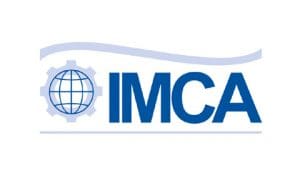 The International Marine Contractors Association (IMCA) has recently published the revised document ‘Hyperbaric Evacuation Systems (HES) Interface Requirements’ (IMCA D 051 Rev. 1); and an Information Note that demonstrates the importance of cross-industry collaboration of a topic as vital to safety as hyperbaric evacuation.
The International Marine Contractors Association (IMCA) has recently published the revised document ‘Hyperbaric Evacuation Systems (HES) Interface Requirements’ (IMCA D 051 Rev. 1); and an Information Note that demonstrates the importance of cross-industry collaboration of a topic as vital to safety as hyperbaric evacuation.
IMCA D 051 seeks to address the interface issues encountered when a diving contractor needs to remove its divers from a stricken facility by use of a hyperbaric rescue unit (HRU). It outlines IMCA’s recommendation of requirements for future builds, it is not written with intent to retrofit existing systems.
The guidance has clear objectives, as IMCA’s Technical Director, Jane Bugler explains: “In publishing the revised version of D 051 we are planning for the future; providing drawings and technical data that will advise and support all interested parties; recognising and reflecting current good practice; and aiming to gain recognition and total world-wide acceptance of the fact that the ultimate objective is that ‘every HRU will be able to mate with every DSV or HRF of any class anywhere in the world’.
“We recognise that this particular objective might not be met for 30 years or more, until non-IMCA D 051 compatible diving support vessels (DSVs), mobile saturation systems on vessels and/or barges; and hyperbaric reception facilities (HRFs) in use today have reached the end of their service life, but now is the time to plan for an ever-safer future.”
IMCA D 051 can be downloaded free of charge from the IMCA website at www.imca-int.com by members and non-members alike; and printed copies are available at £10.00 for members and £20.00 for non-members frompublications@imca-int.com
IMCA and IOGP collaboration
IMCA published an information note in November ‘Guidance on the use of IMCA D 052 – Guidance on Hyperbaric Evacuation Systems – to meet the requirements set out in OGP 478 – Performance of Saturation Diving Emergency Hyperbaric Evacuation and Recovery’ (IMCA D 15/14) which clearly demonstrates the value of collaboration within the industry.
Jane Bugler explains the background: “In May 2013 IMCA published the second in its suite of guidance on hyperbaric evacuation – IMCA D 052 – Guidance on hyperbaric evacuation systems. This document provides guidance on the minimum requirements needed to achieve safe and successful evacuation of divers from saturation in an emergency and to identify the various factors that needed to be considered in the planning phase before diving commenced. It also provides guidance on the risk assessment process needed to ensure that an appropriate standard of safety was achieved.
“The International Association of Oil & Gas Producers (IOGP)’s Diving Operations sub Committee (DOsC) developed its report OGP 478 – Performance of saturation diving emergency evacuation and recovery. This report provides information on what IOGP members would expect to see in a contractor’s hyperbaric evacuation plan.
“To guide the industry on how to meet the requirements set out in OGP 478 using IMCA’s guidance, a joint workgroup comprising both members of IMCA’s Diving Division Management Committee and IOGP’s DOsC was set up as proposed by IMCA. A gap analysis was performed between IMCA D 052 and OGP 478 which identified some differences between the two documents.”
The information note is available via the members-only part of the IMCA website. Non-members can request a copy from IMCA.
Further information
Further information on IMCA and its work on behalf of its 1000+ member companies in over 60 countries is available fromwww.imca-int.com and imca@imca-int.com. The association has LinkedIn and Facebook groups and its Twitter handle is @IMCAint
About IMCA
- IMCA is an international association with well over a thousand members in more than 60 countries representing offshore, marine and underwater engineering companies. IMCA has four technical divisions, covering marine/specialist vessel operations, offshore diving, hydrographic survey and remote systems and ROVs, plus geographic sections for the Asia-Pacific, Central & North America, Europe & Africa, Middle East & India and South America regions. As well as a core focus on safety, the environment, competence and training, IMCA seeks to promote its members’ common interests, to resolve industry-wide issues and to provide an authoritative voice for its members.
- IMCA Vision & Strategy. As a result of work and collective input in 2013, IMCA has redefined its stated core purpose to be “Improving performance in the marine contracting industry”. To achieve this goal, IMCA’s Vision & Strategy has been devised with two elements in mind: Core activities and ways of working.
- IMCA publishes some 200 guidance notes and technical reports – many are available for free downloading by members and non-members alike. These have been developed over the years and are extensively distributed. They are a definition of what IMCA stands for, including widely recognised diving and ROV codes of practice, DP documentation, marine good practice guidance, the Common Marine Inspection Document (CMID) – now available electronically as eCMID, safety recommendations, outline training syllabi and the IMCA competence scheme guidance. In addition to the range of printed guidance documents, IMCA also produces safety promotional materials, circulates information notes and distributes safety flashes.
About the industry IMCA serves
The marine contracting industry plays a vital global role. Its vessels account for 4% of the world’s maritime fleet. Collectively IMCA members employ some 350, 000 people and have an annual turnover of around $150bn. They work in all the world’s major offshore areas, delivering large offshore oil and gas and marine renewables projects around the globe that quite literally fuel the global economy.





